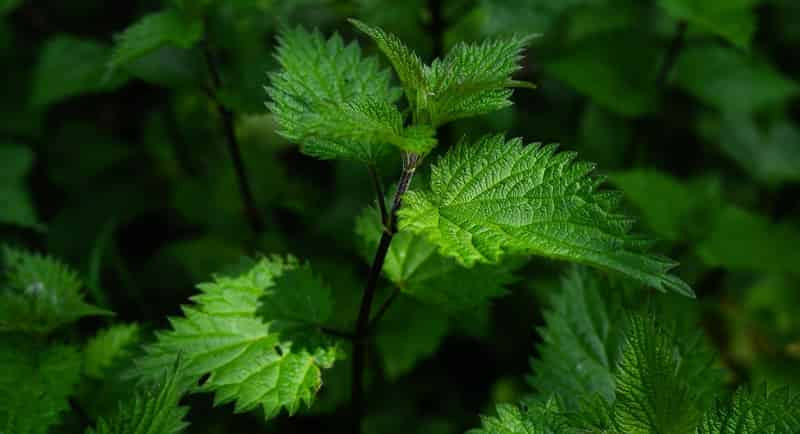Leaves For Shrimp
As a shrimp owner, one of the most important things to consider is their diet. While you may have heard of pellets and other commercial foods, many shrimp owners prefer to supplement their diet with leaves. Not only are they a natural and affordable option, but they can also provide additional health benefits for your shrimps. In this article, we will explore the benefits of leaves for shrimp and how you can incorporate them into your shrimp's diet.
The Pain Points of Leaves for Shrimp
Shrimp owners often face the challenge of finding a balanced and healthy diet for their pets. Commercial foods may not always be the best option, as they may contain fillers and preservatives that can harm your shrimp in the long term. Additionally, some commercial foods may not provide your shrimp with the essential nutrients they need to thrive. In such cases, finding a reliable source of leaves can be a feasible alternative.
The Target of Leaves for Shrimp
The target of leaves for shrimp is to provide a natural and healthy diet that is rich in essential nutrients and fiber. Shrimps are known to graze on leaves in their natural habitat, and incorporating leaves into their diet mimics their natural feeding habits. Leaves are a rich source of minerals and vitamins that can aid in digestions and boost immunity.
Summary of Main Points
In summary, leaves for shrimp are an excellent addition to their diet, providing an affordable and natural source of food. Benefits of incorporating leaves in a shrimp diet include better digestion, immunity boost, and increased vitality. Additionally, feeding your shrimp leaves is an eco-friendly option that reduces waste and environmental impact.
Recommended Leaves for Shrimp
Some of the most popular leaves for shrimp include Nettle leaves, Mulberry leaves, and Shrimp plant leaves. Among these, Nettle leaves are highly recommended for their various health benefits. They provide essential minerals such as calcium and magnesium and are known to help with ecdysis or molting.
A personal experience that I had with feeding my shrimps Nettle leaves was that it helped them recover from bacterial infections. I noticed that their shells were less brittle, and they were more active than usual. This experience gave me the confidence to continue feeding them leaves regularly.
Mulberry Leaves for Shrimp
Mulberry leaves are also an excellent option for your shrimp's diet. They are rich in fiber and contain essential nutrients such as iron, magnesium, and calcium. Mulberry leaves are known to help with digestion and prevent constipation. Additionally, they contain flavonoids that have antibacterial and anti-inflammatory properties, aiding in the prevention of common shrimp diseases.
I found that feeding my shrimp Mulberry leaves helped boost their coloration and overall health. The leaves also helped with the molting process, as the shrimp were able to shed their shells quickly and without difficulty.
Nettle Leaves for Shrimp
Nettle leaves are among the most recommended leaves for shrimp due to their numerous benefits. They contain high levels of calcium, potassium, and magnesium, which are all essential minerals for the growth and development of shrimps. Additionally, they are known to contain antioxidants that boost immunity and prevent common shrimp diseases.
Feeding my shrimps Nettle leaves was a game-changer for me. I noticed increased vitality, improved coloration, and better overall health. The shrimp also became more active and lively, which was evident from their swimming patterns.
The Environmental Impact of Leaves for Shrimp
In addition to the benefits of leaves for shrimp, it is essential to consider the environmental impact of feeding them. Leaves are a natural and renewable food source for shrimps, which makes them an eco-friendly option. Additionally, feeding your shrimp leaves reduces waste and eliminates the need for commercial foods that may not be sustainably sourced.
Question and Answer
Q. How often should I feed my shrimp leaves?
A. It is recommended to feed shrimp leaves at least twice a week or as often as possible.
Q. Can I feed my shrimp any type of leaf?
A. No, not all leaves are suitable for shrimp. Avoid leaves from toxic plants and opt for leaves that have been popularly fed to shrimp, such as Nettle, Mulberry, and Indian Almond leaves.
Q. Do I need to prepare the leaves before feeding them to my shrimp?
A. Yes, it is recommended to prepare the leaves by boiling them in water for about 5 minutes to soften them before feeding to your shrimps.
Q. How can I tell if my shrimp likes the leaves?
A. Shrimps will often swarm the leaves if they enjoy them. You may also notice a change in their behavior, as they become more active and lively.
Conclusion
In conclusion, incorporating leaves into your shrimp's diet provides a natural and healthy alternative to commercial foods. Leaves have numerous benefits, including better digestion, immunity boost, and increased vitality. Nettle leaves, Mulberry leaves, and Shrimp plant leaves are some of the recommended leaves for shrimp. Feeding your shrimp leaves is also an eco-friendly option that reduces waste and promotes sustainability.
Gallery
[Need Advice] What's Wrong With These Leaves? (Shrimp Plant) - Plant Swap
Photo Credit by: bing.com / leaves shrimp plant wrong these plants advice need
Nettle Leaves 🍁 For Shrimp 🦐 - YouTube

Photo Credit by: bing.com /
Emboli's Aquariums: SHRIMP TANK - Mulberry Leaves

Photo Credit by: bing.com / mulberry leaves shrimp tank find
What Leaves Can I Feed My Shrimp?

Photo Credit by: bing.com / nettle sting
Pin By Fuad Cila On Shrimp | Plant Leaves, Plants, Leaves

Photo Credit by: bing.com /